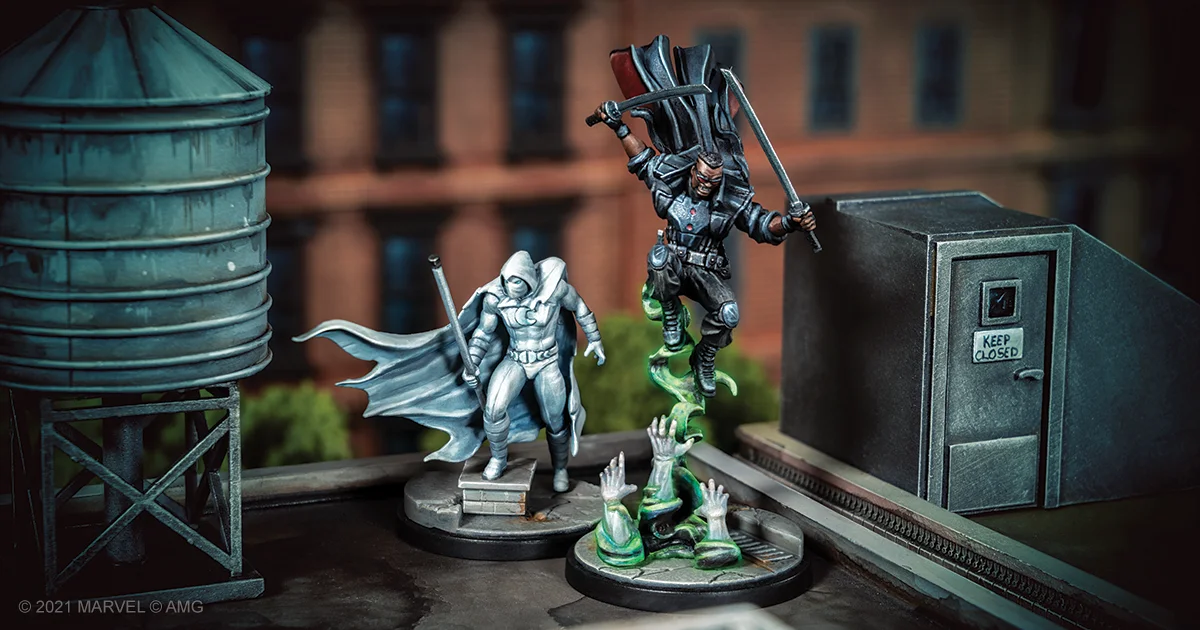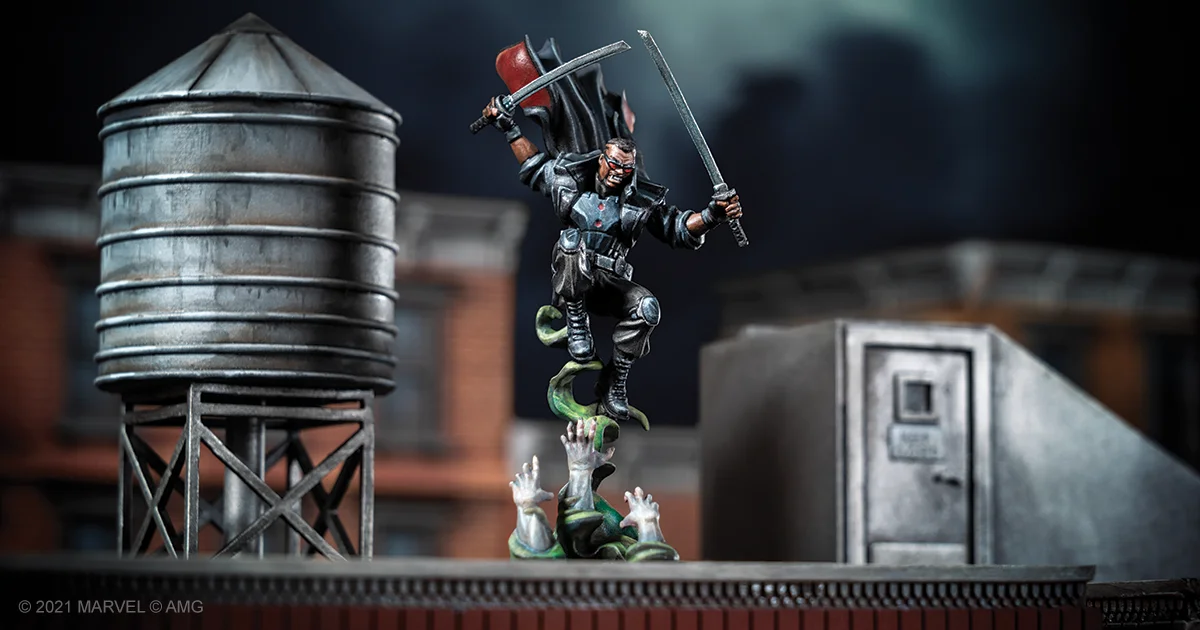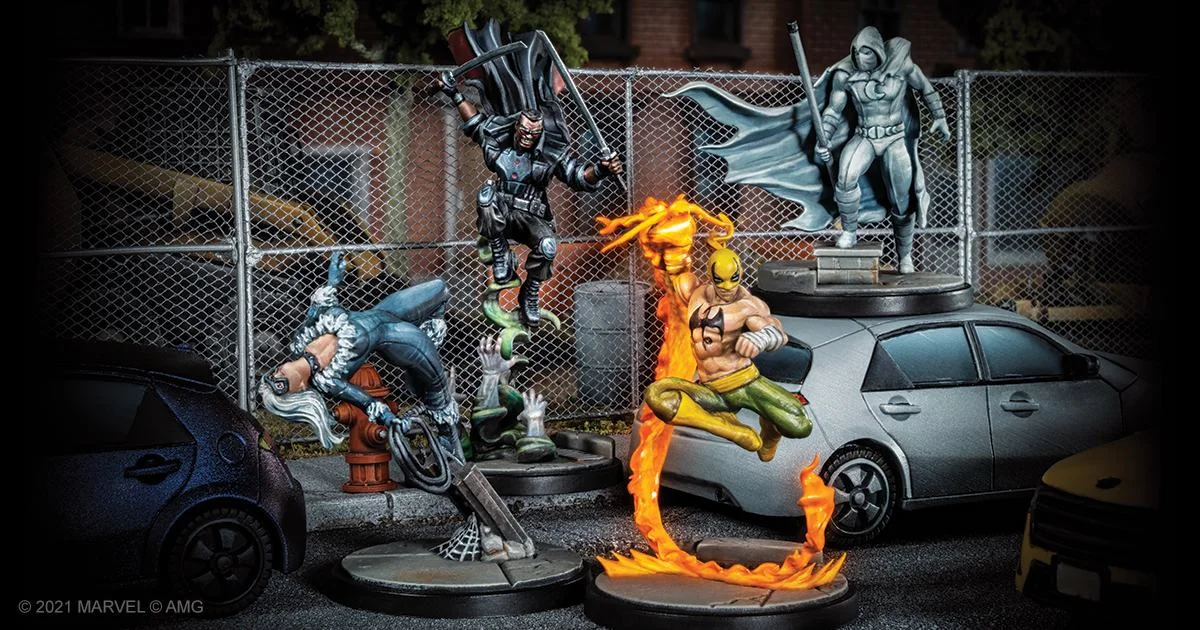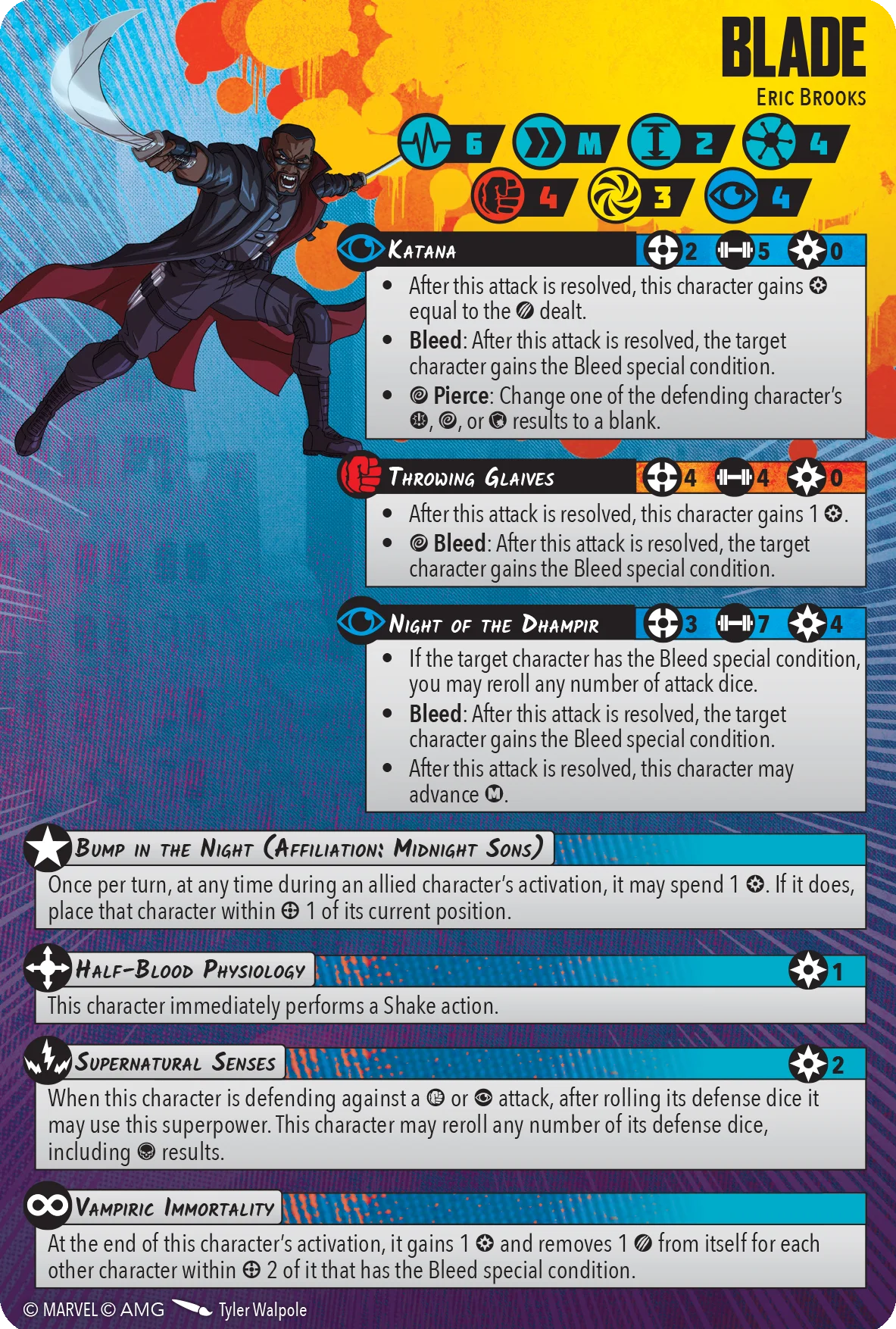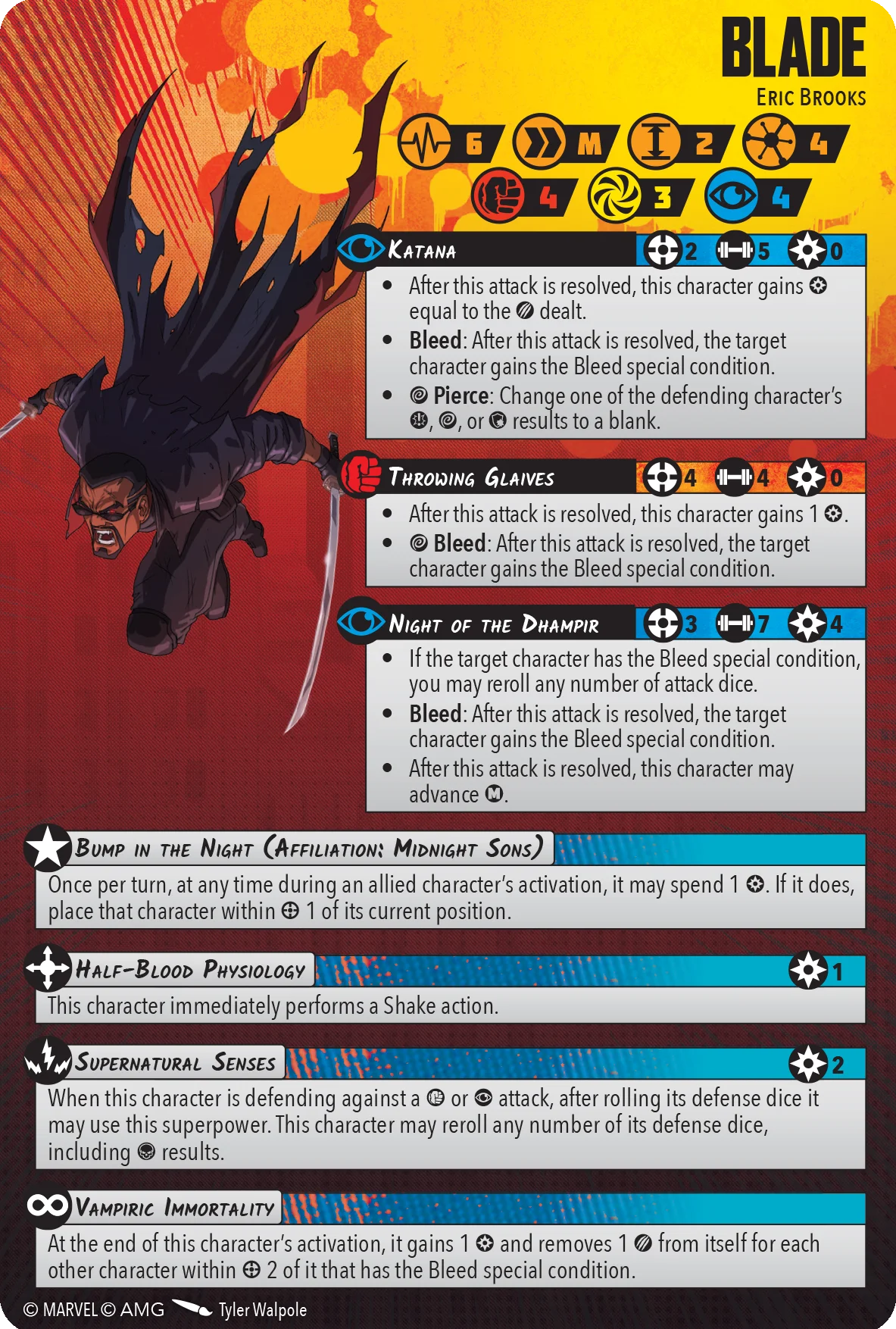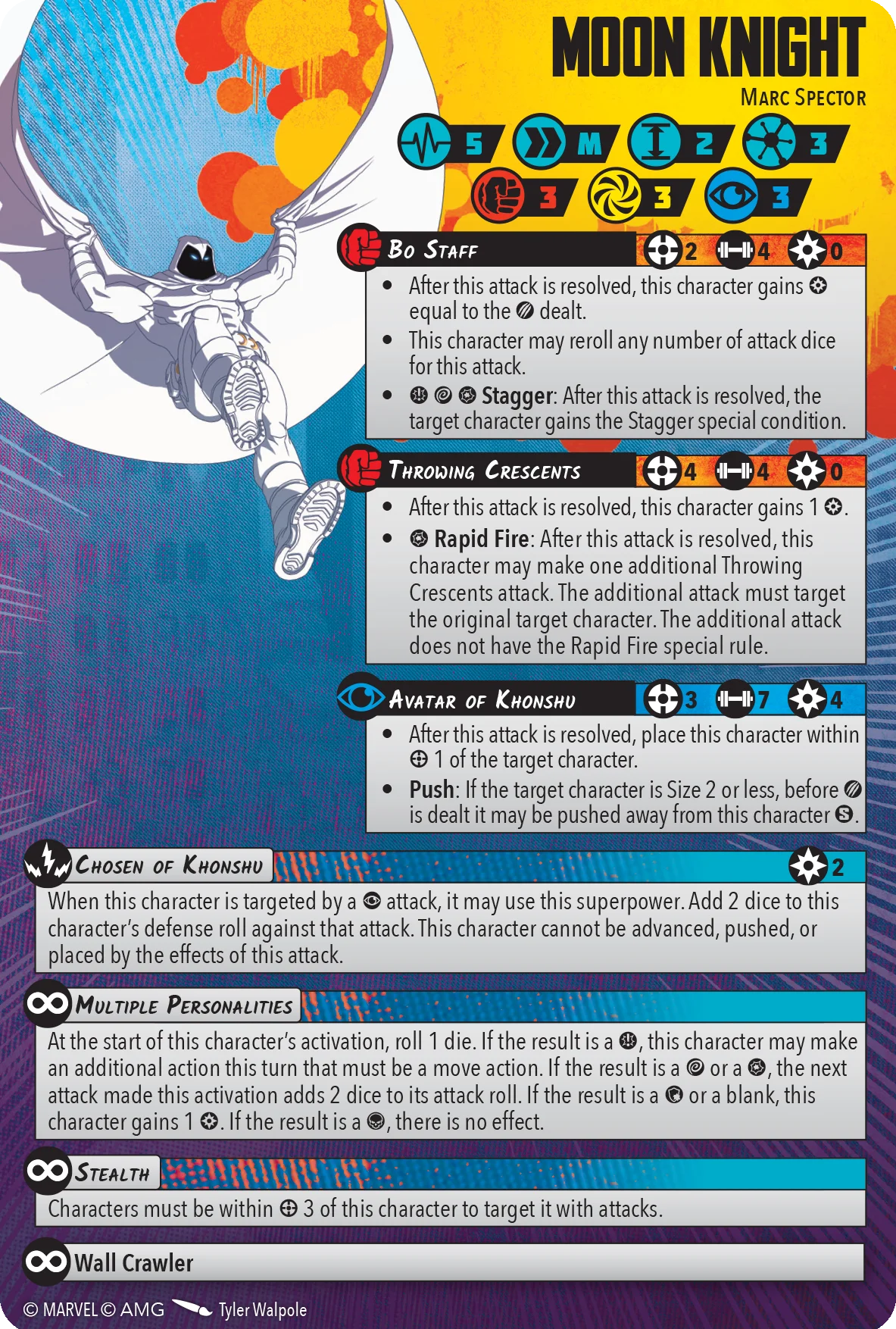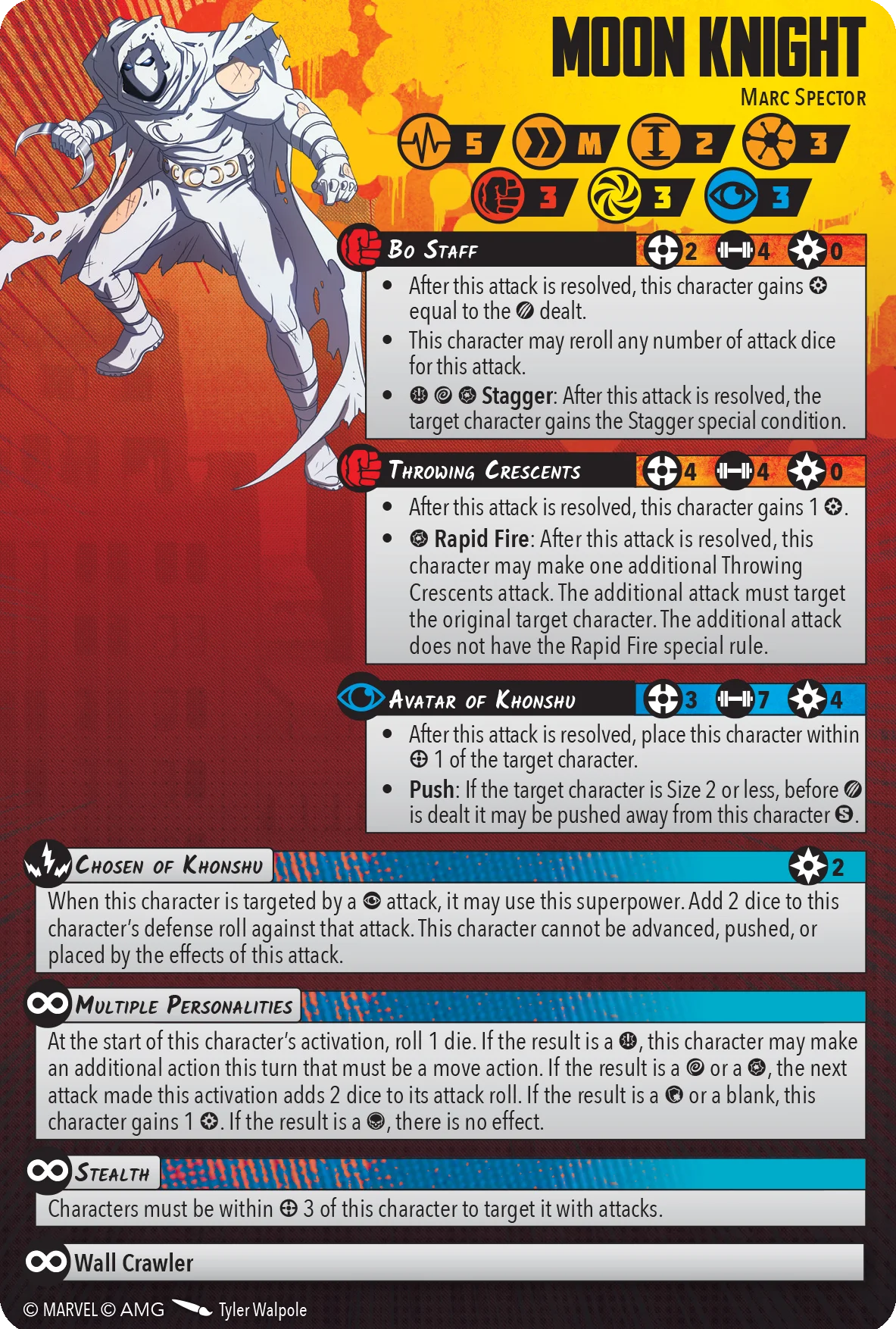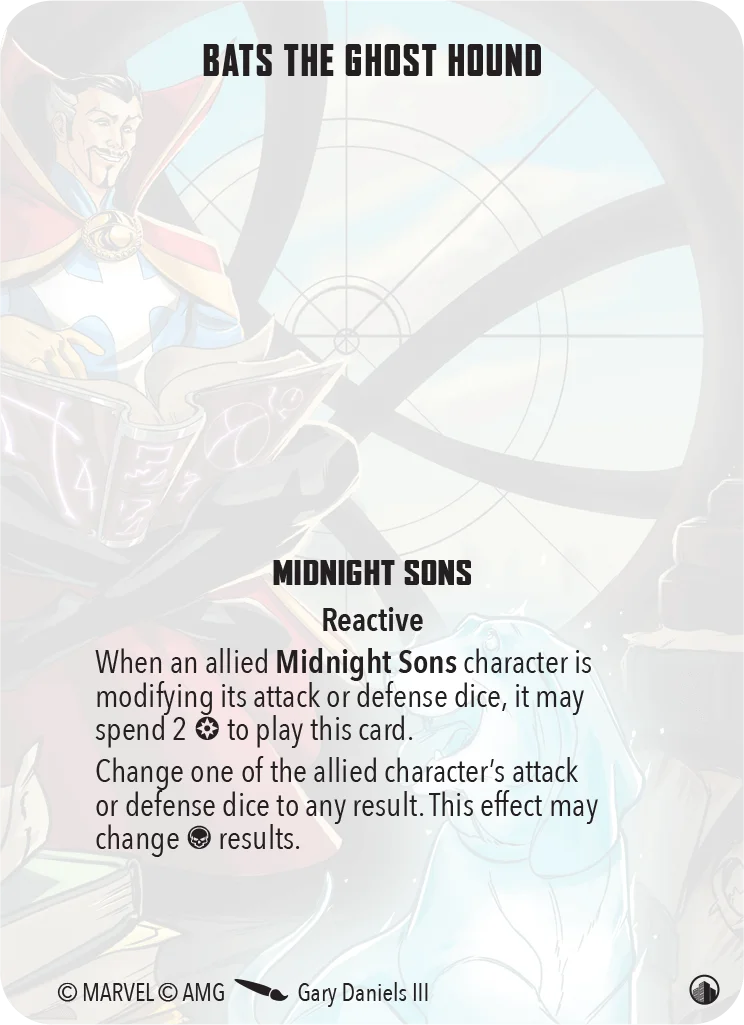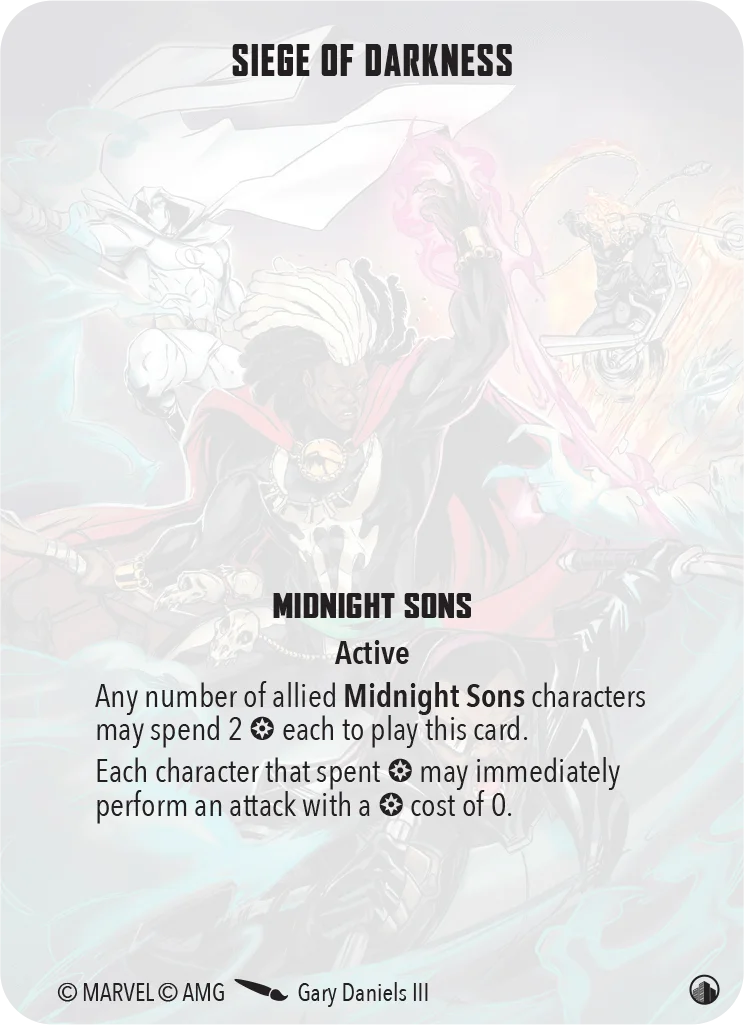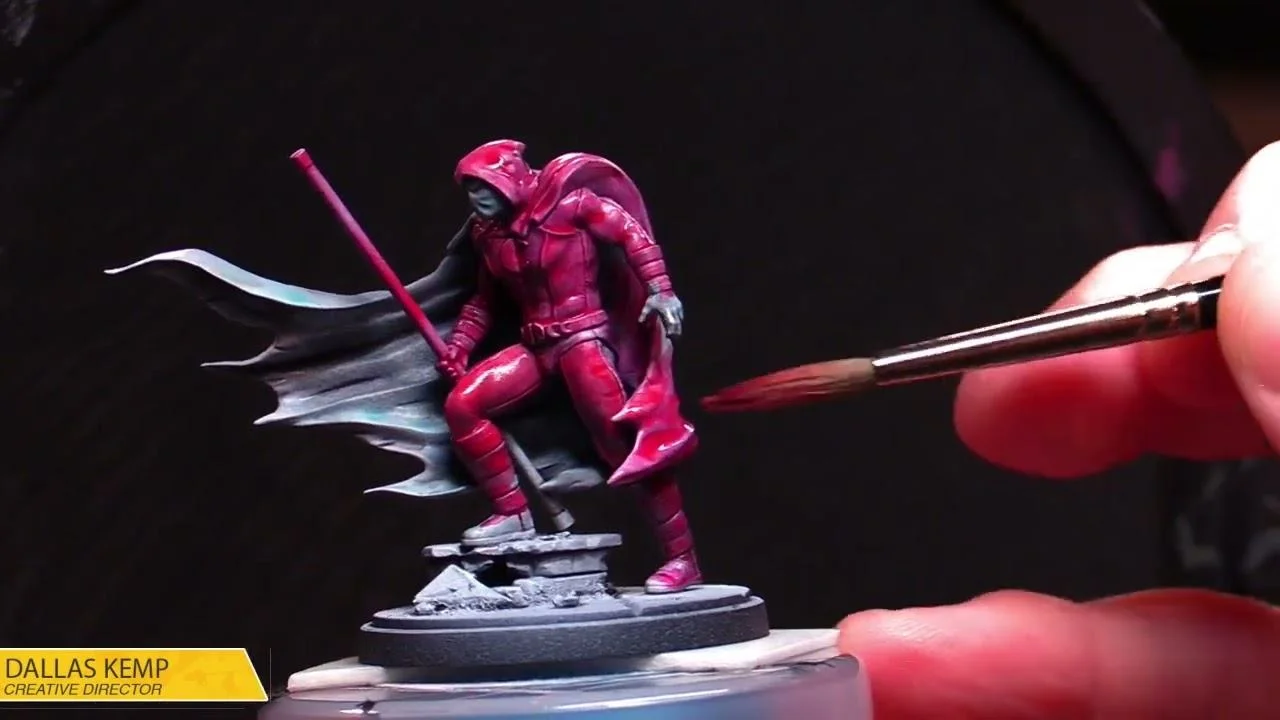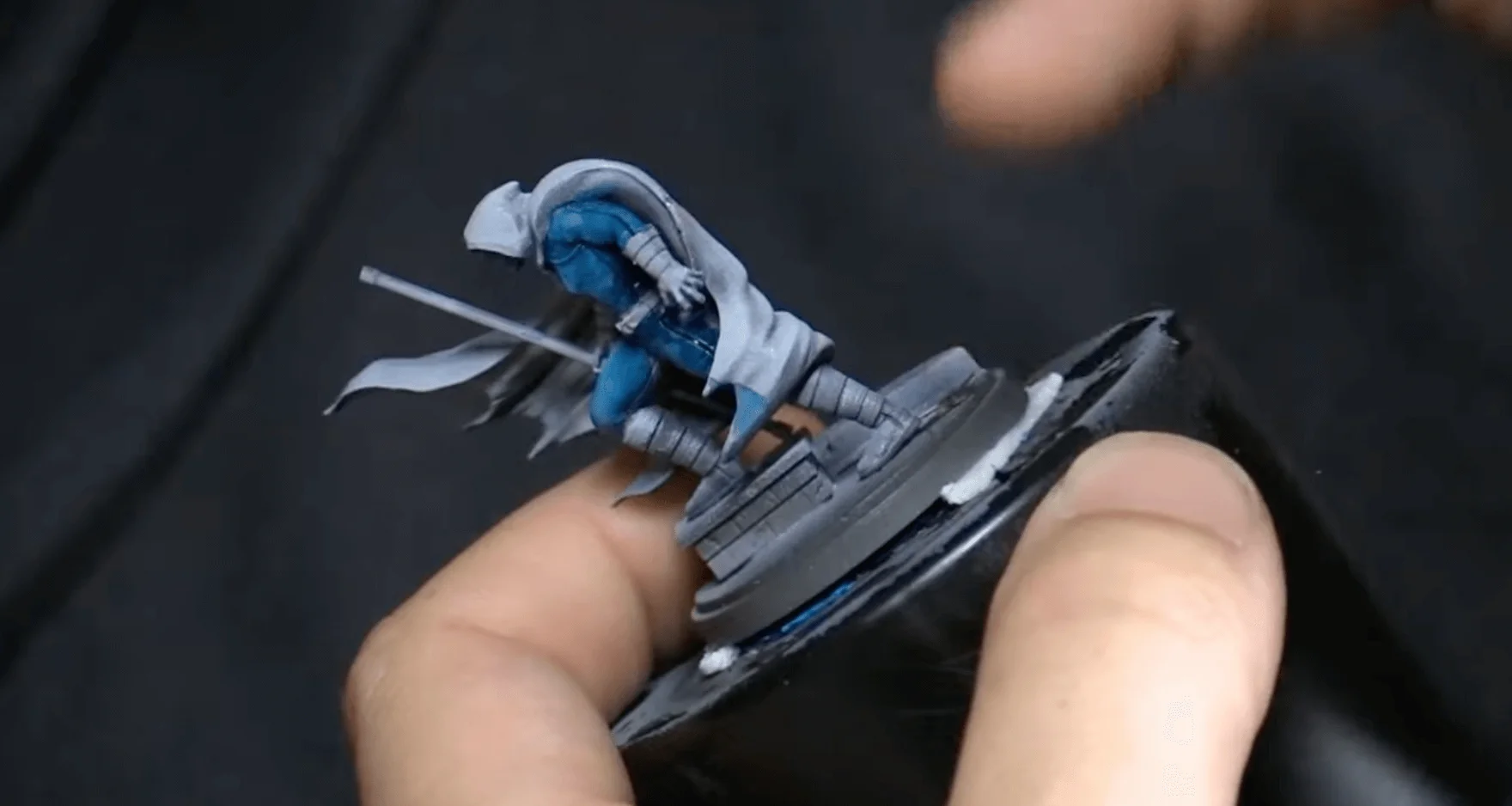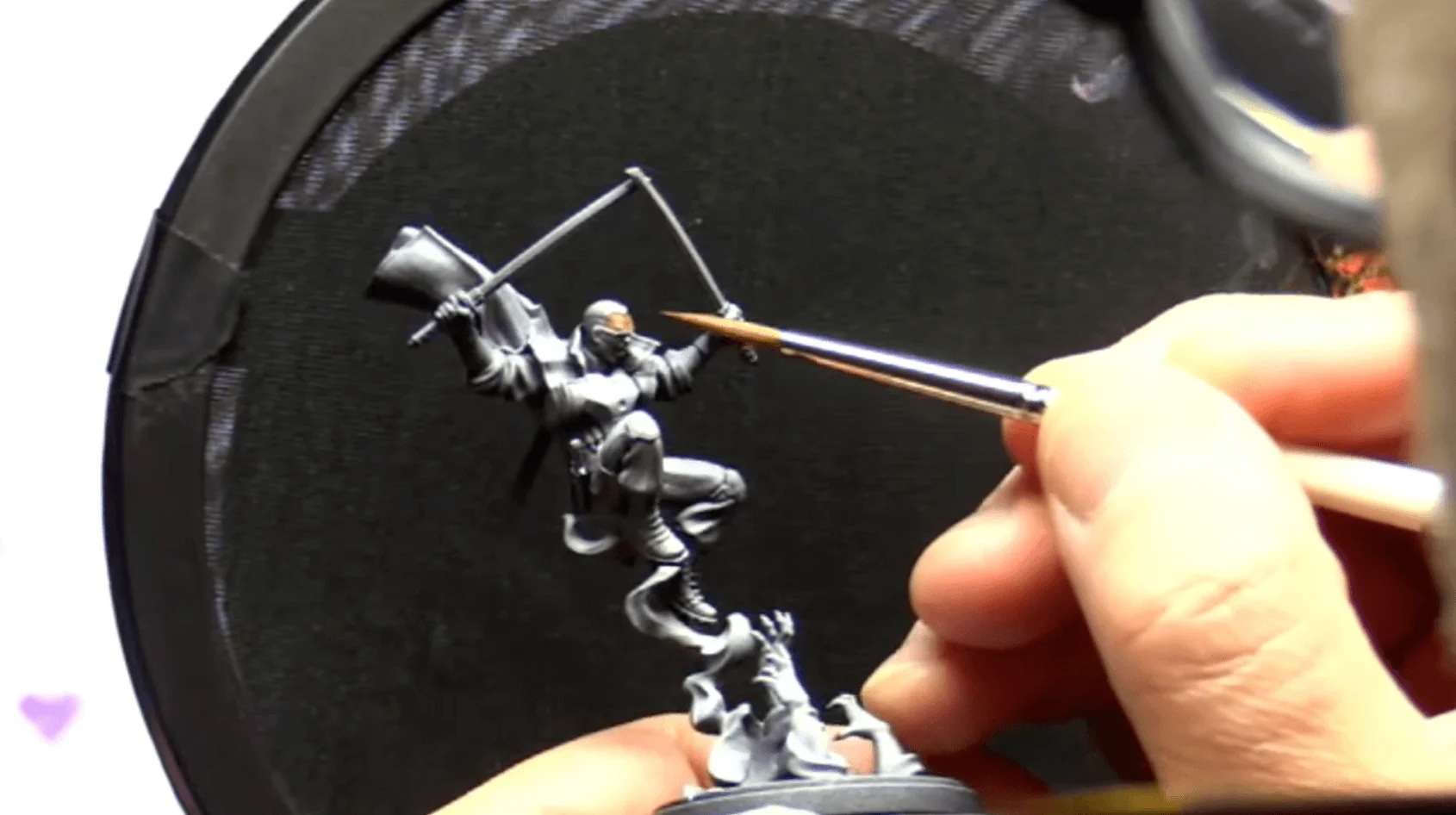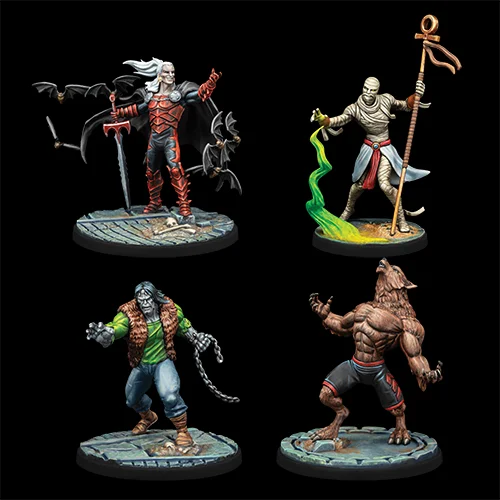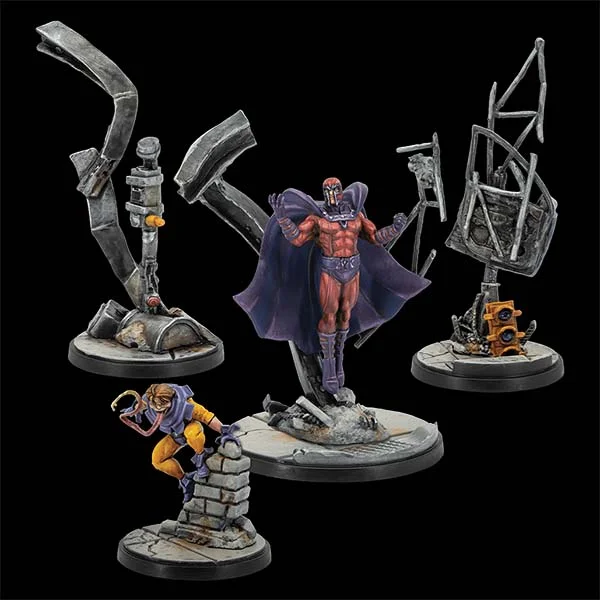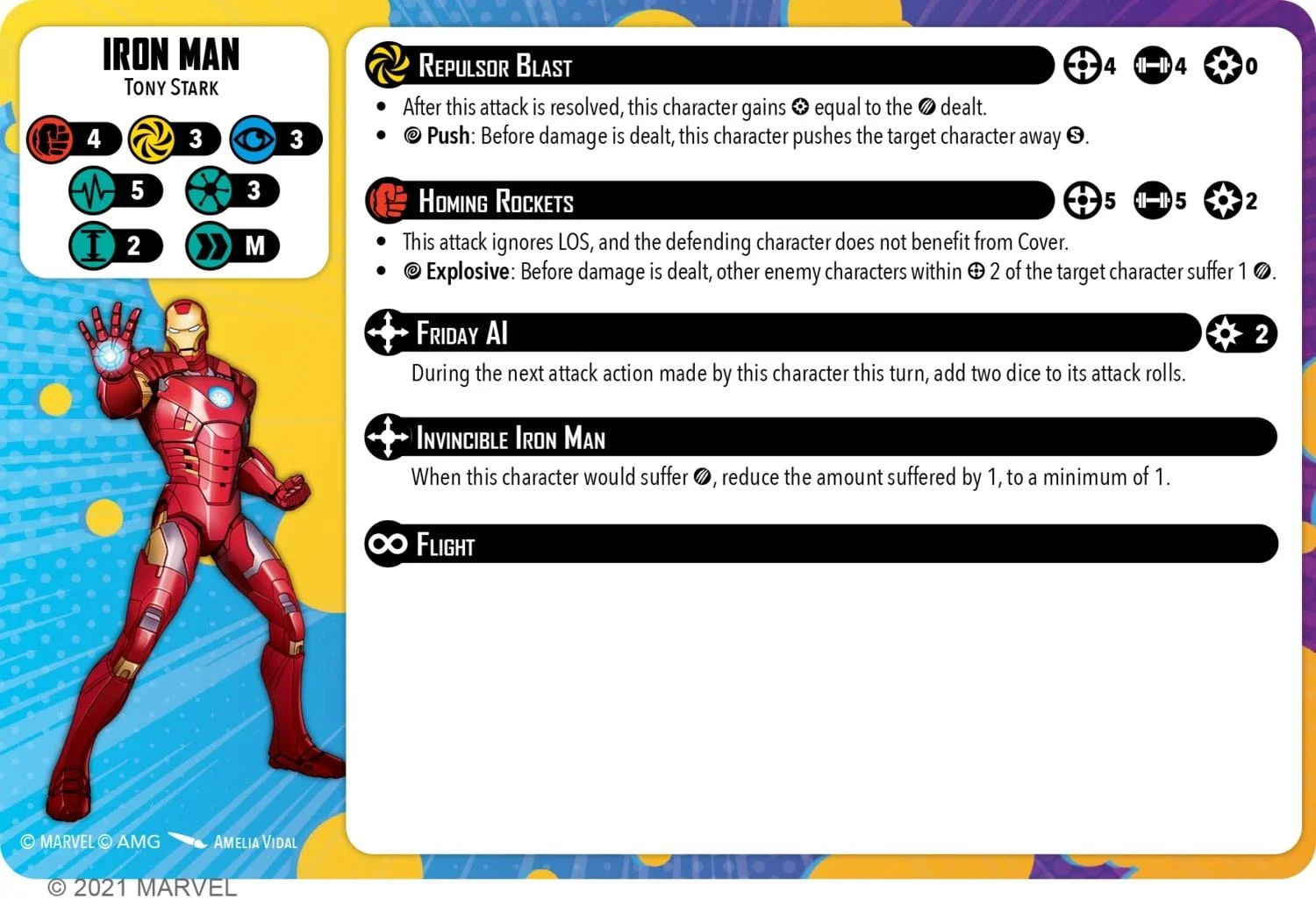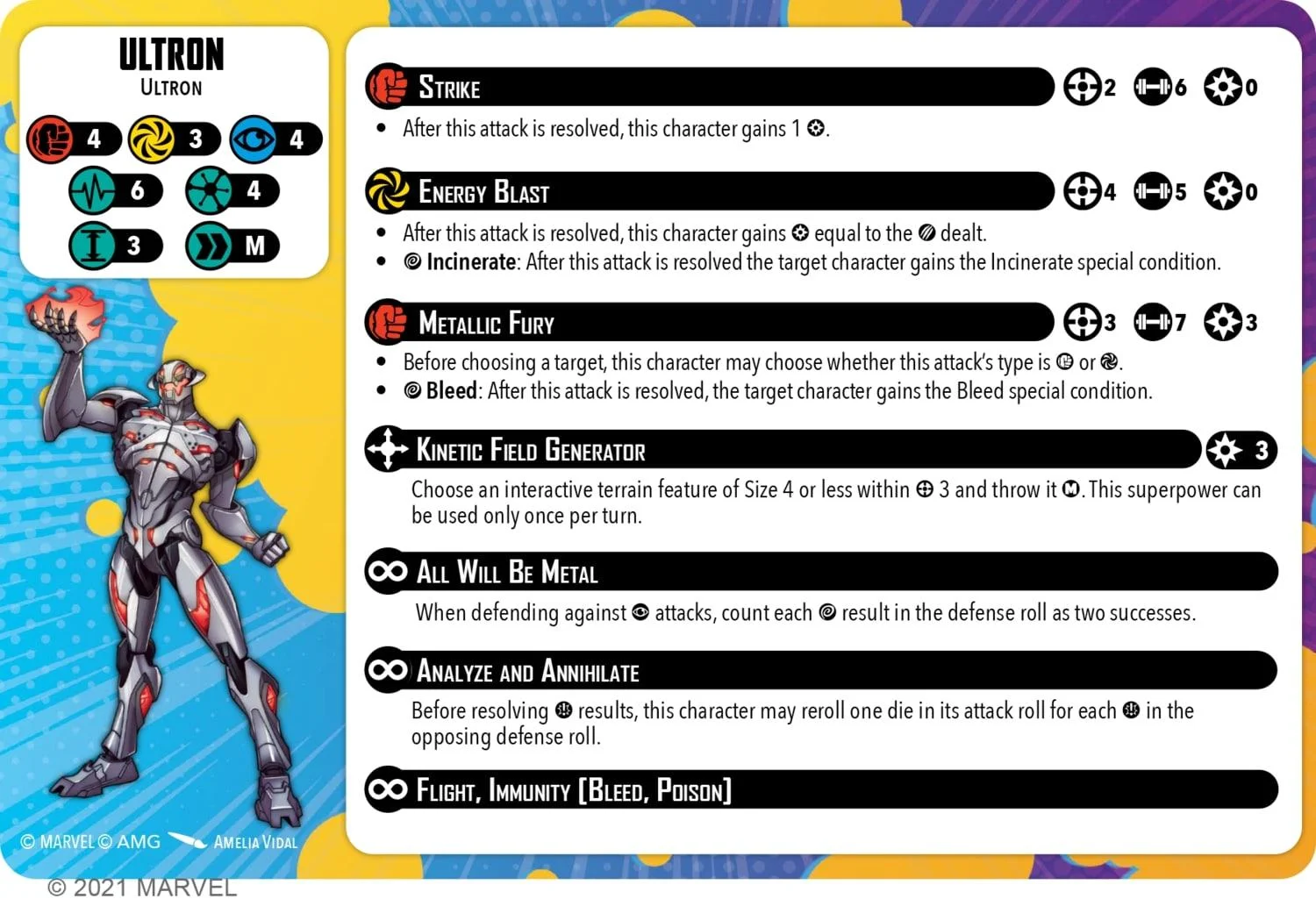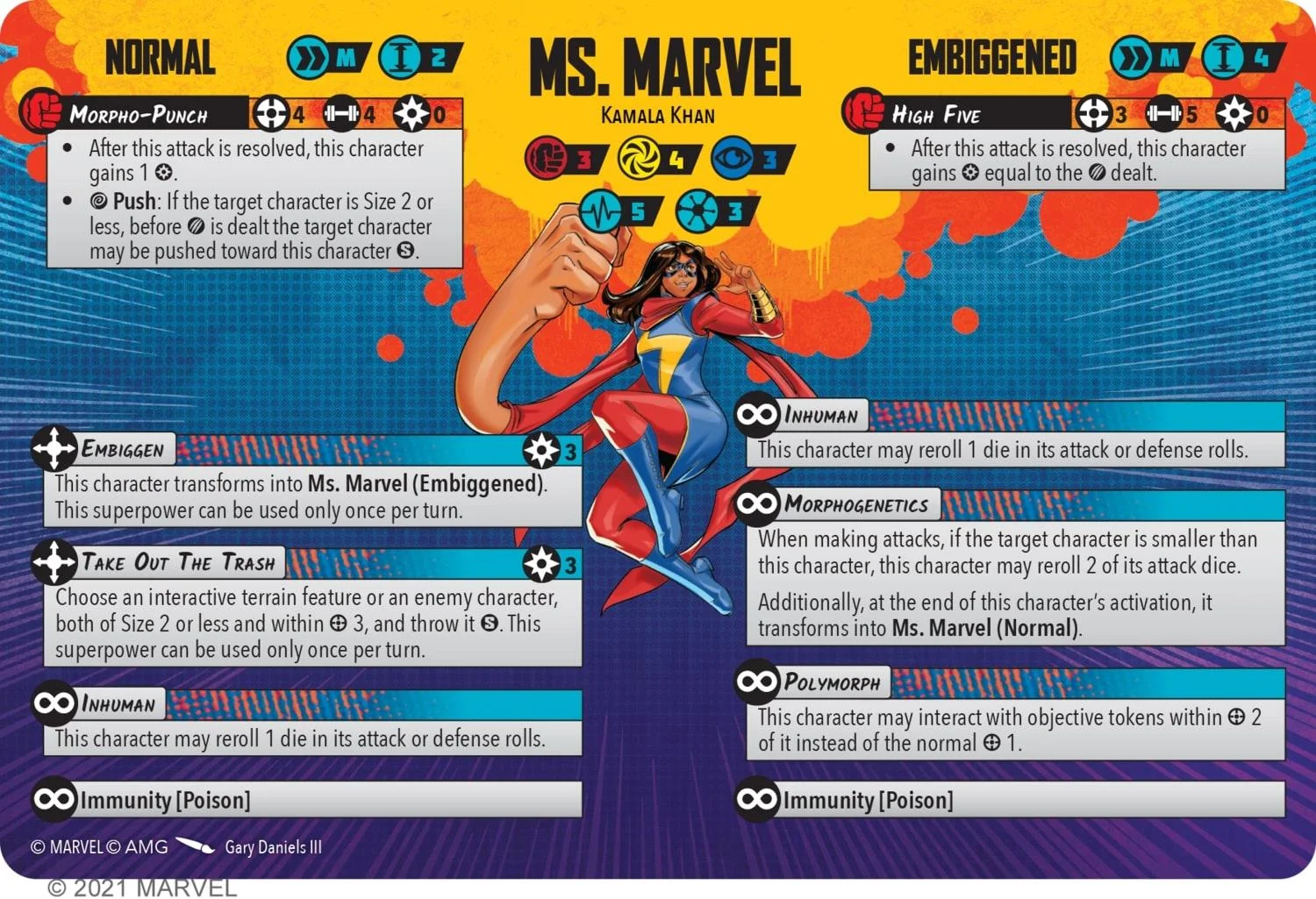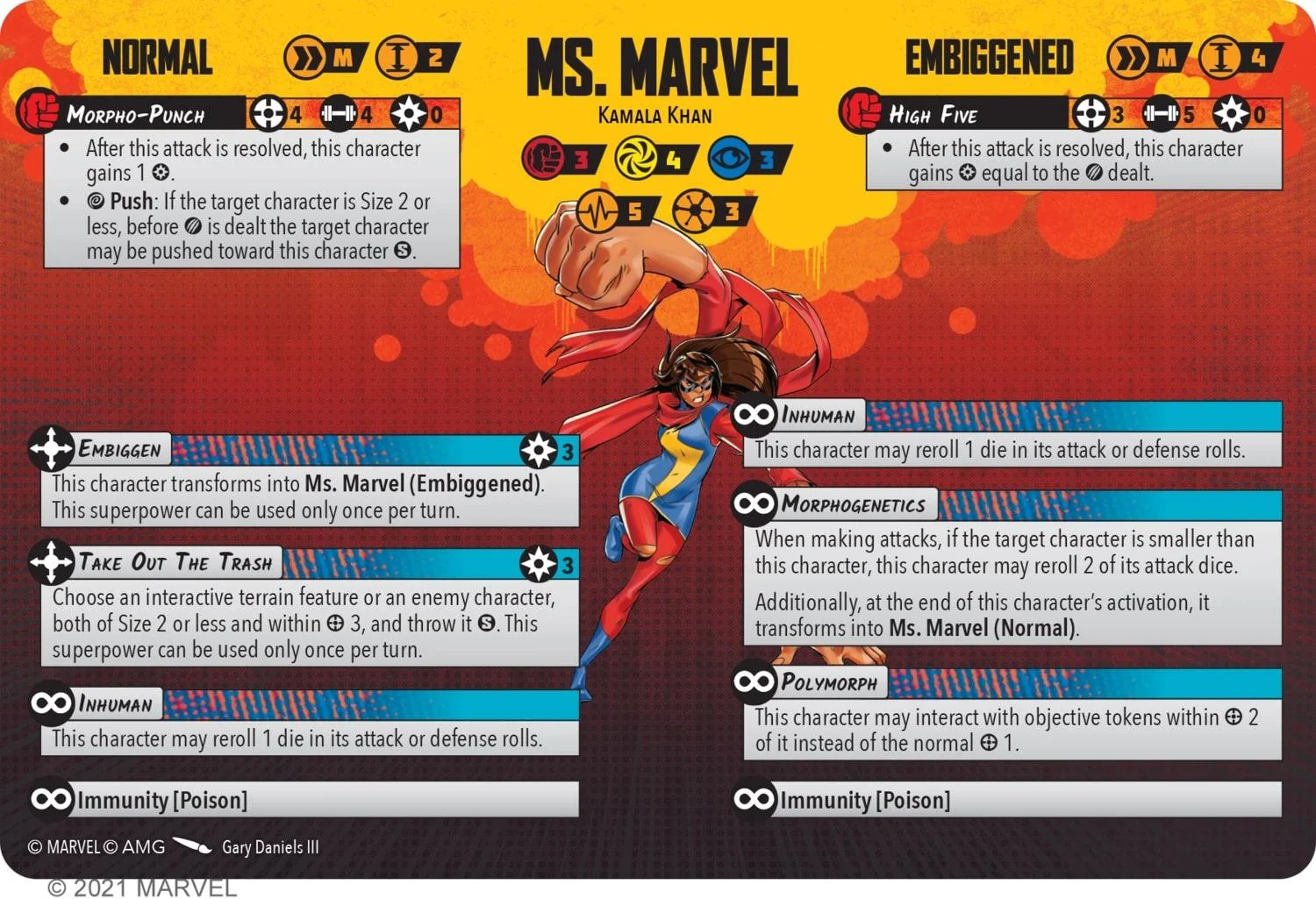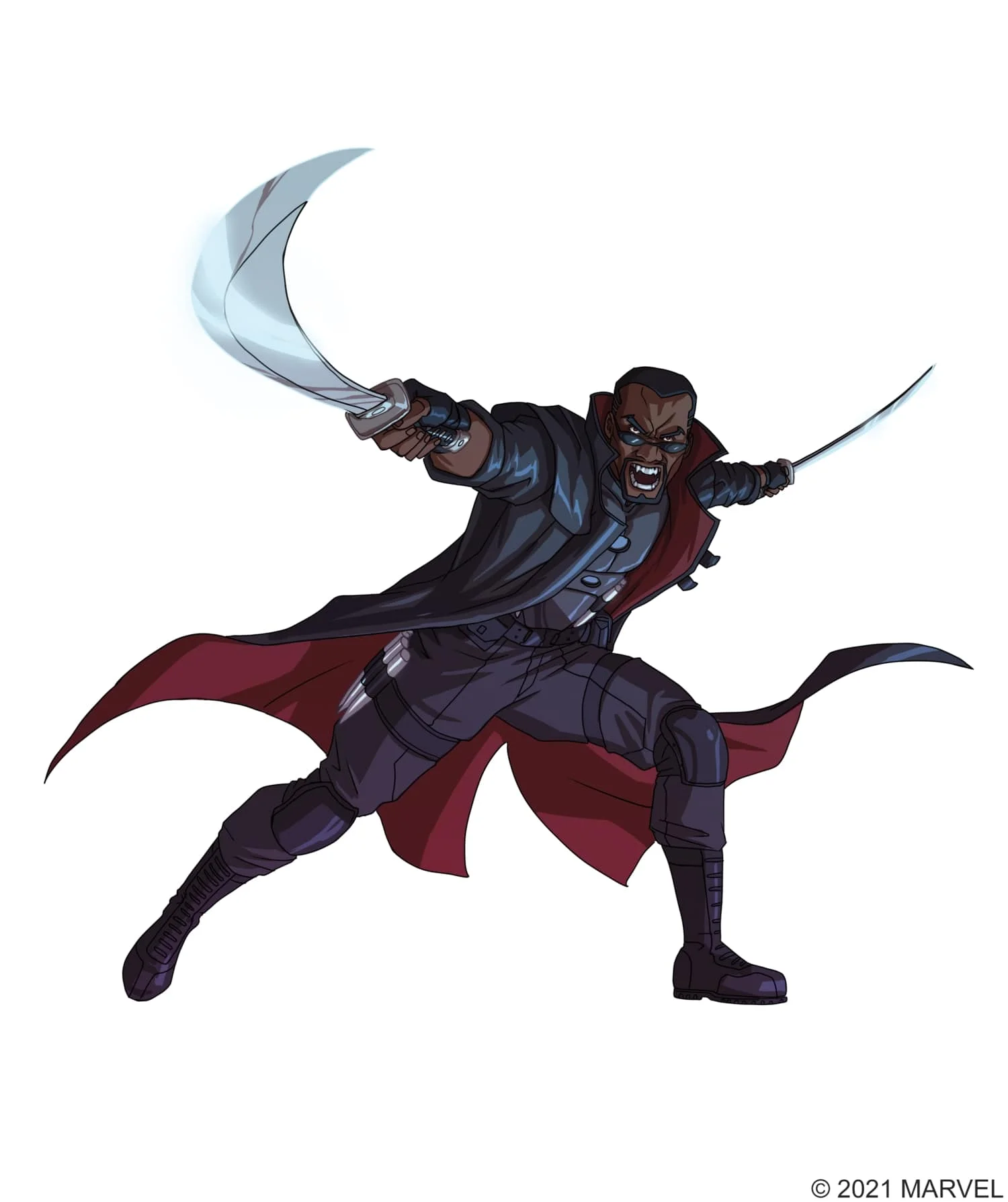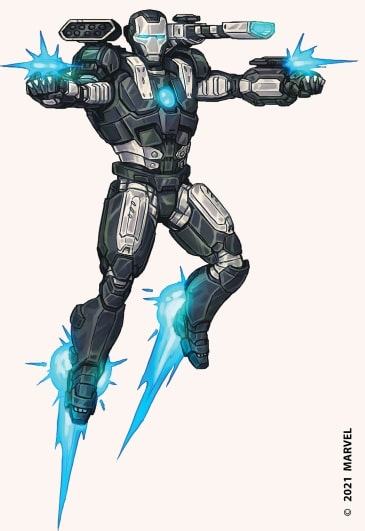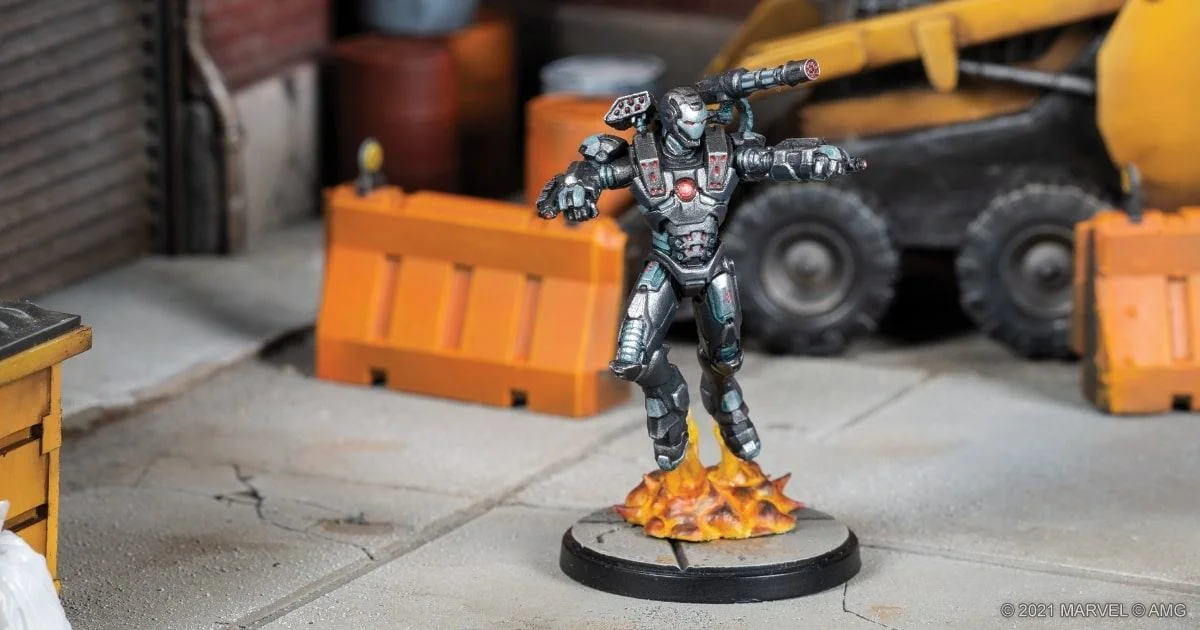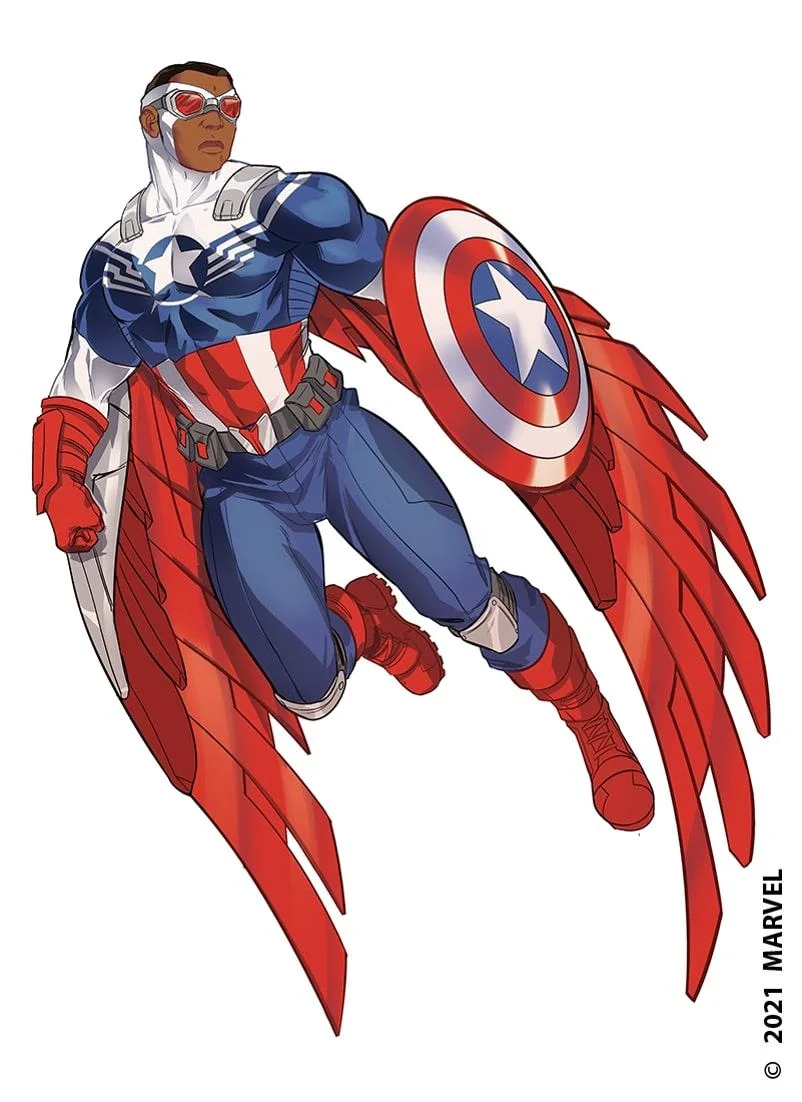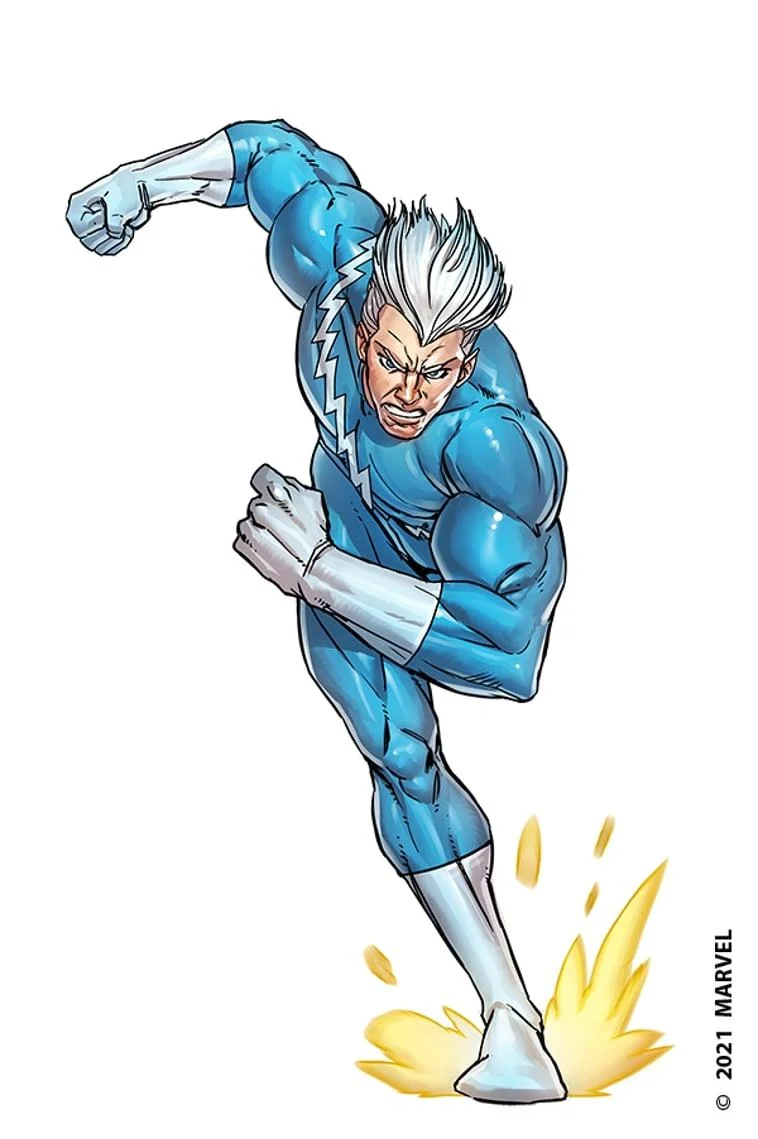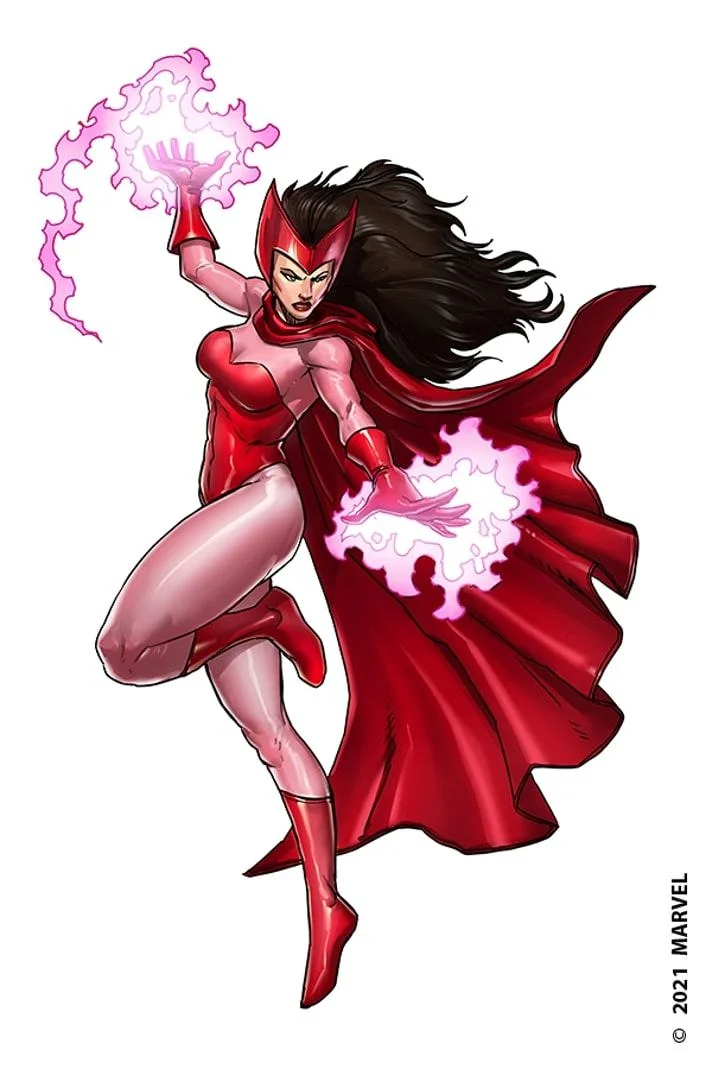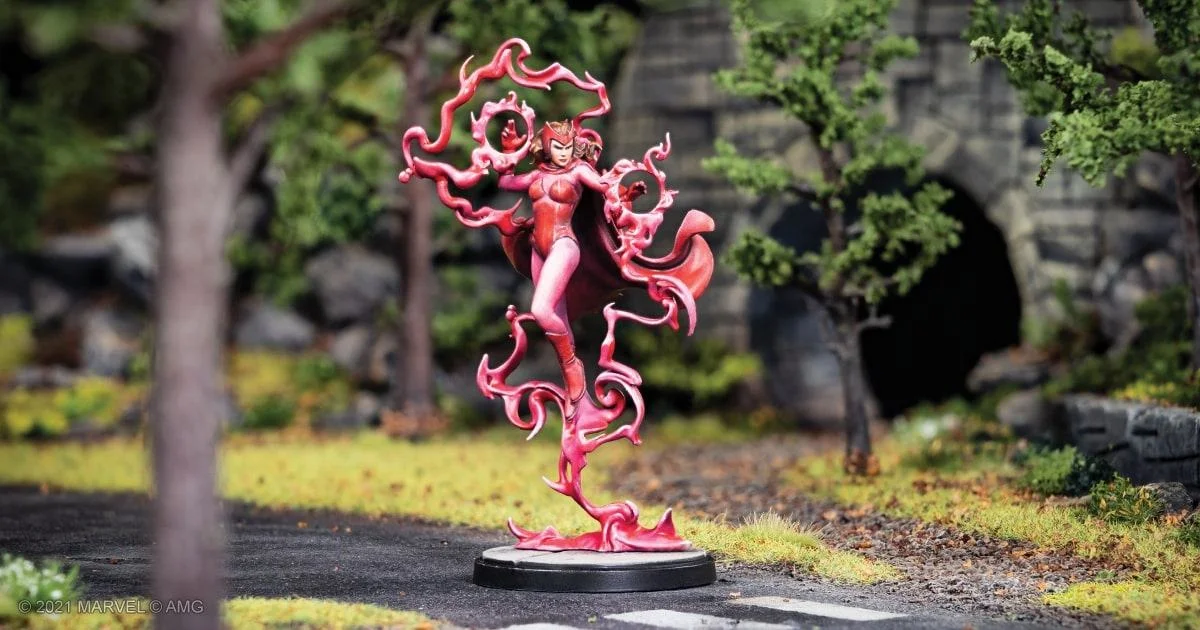Quicksilver’s miniature springs into action with a dramatic sprinting pose. Quicksilver uses a piece of flying debris from an explosion as a literal stepping stone, capturing how, to Pietro Maximoff, the rest of the world might as well be standing still. Wearing his classic outfit with its distinctive lightning bolt slashed across his chest, Quicksilver is ready to sprint across the tabletop.
When you look at Quicksilver’s rules, the first thing you might notice is that he’s fast. Some might even say insanely fast. His Long movement range is a good starting point, but the Speedster active power is where things start to get really interesting. For 2 Power, Quicksilver puts on some blinding speed and can make an additional Long movement—provided he isn’t holding something to weigh him down, like a celestial hammer or a Kree power core. That’s potentially three Long moves, or as we say in these parts, most of the map.
It doesn’t stop there. Quicksilver moves so fast he can blaze across water without sinking or sprint up the side of a building, so he has the Wall Crawler innate superpower. Quicksilver’s super-speed also makes him a challenge for opponents to hit. He has a pair of powerful defensive superpowers that let him duck out of the line of sight and actually dodge bullets.
And when he reaches an enemy, Quicksilver’s speed comes in handy on the offensive, too. Both of his attacks draw on his speed and mobility, giving him the chance to move after striking. His basic attack, Supersonic Strike, not only lets him perform a hit-and-run on one target, thanks to the Dash special rule, but he can carry that momentum into another attack on a different target with the Velocity special rule. Best of all, there’s no limitation on how often either of these two rules can trigger with Supersonic Strike, so Quicksilver can blur through the enemy, leaving a line of bruises to mark his passage!
With that, we’ve crossed the finish line of this first look at Quicksilver for Marvel: Crisis Protocol. Be sure to tune in next time when we show off how yet another character makes that first jump from Panel to Play. You can pre-order your own copy of the Scarlet Witch & Quicksilver Character Pack at your local game store or through our webstore here.
Until then, this is Atomic Mass Transmissions, signing off!
